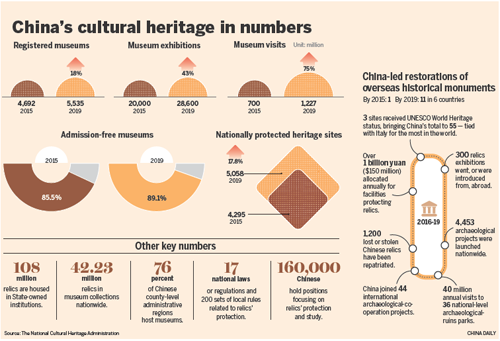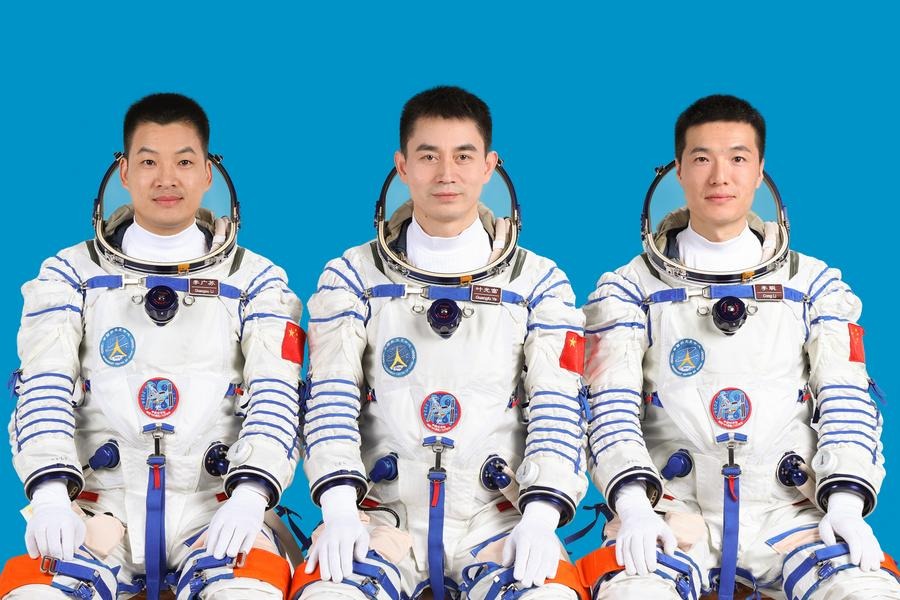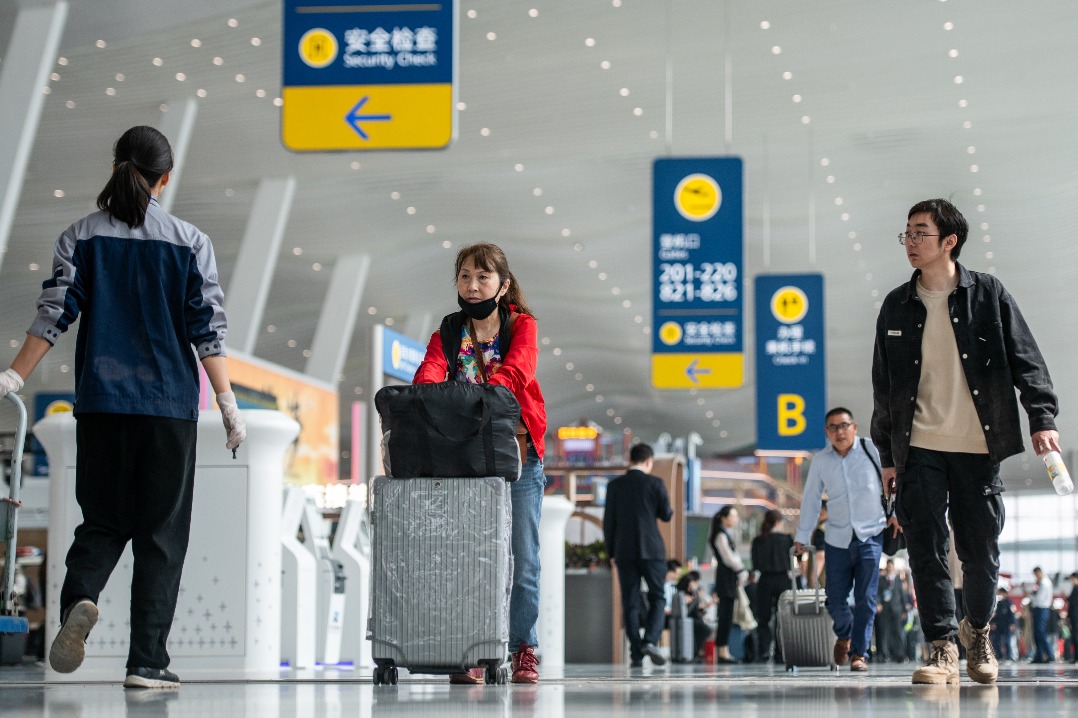Preserving the past
China's cultural heritage sector has made great progress during the 13th Five-Year Plan period, Wang Kaihao reports.
By Wang Kaihao | CHINA DAILY | Updated: 2020-10-23 07:31
 China's cultural heritage in numbers CHINA DAILY
China's cultural heritage in numbers CHINA DAILY
Archaeological findings
On Sept 28, Xi Jinping, general secretary of the Communist Party of China, emphasized the importance of archaeology at a group-study session of the Political Bureau of the CPC Central Committee.
This shows the crucial role archaeology has played in "offering references for the country's overall development", says Chen Xingcan, director of the Chinese Academy of Social Sciences' Institute of Archaeology, who participated in the group study.
"Thanks to interdisciplinary studies and the adoption of new technologies in laboratories, we're getting a clearer understanding of the origins of Chinese civilization," he says. "Archaeology is reconstructing the picture of prehistoric periods in China."
In July 2019, the 5,300-year-old Archaeological Ruins of Liangzhu City in Hangzhou, Zhejiang province, were inscribed on the UNESCO World Heritage list, including some of the newest discoveries made after 2016, like the world's earliest-known dam.
"China has a rich tradition of recording history," Chen says.
"However, most records are about rulers and dynastic rise and fall. It needs archaeology to decode the rest of people's lives."
In 2018, the National Cultural Heritage Administration launched Archaeology China, a program to study early Chinese history through well-planned excavations. Breakthroughs have been made nationwide on possible capitals of early-stage regional states, ranging from the Shimao site in Shaanxi province and the Taosi site in Shanxi province to the Shijiahe site in Hubei province.
The program's latest focus is the Erlitou site in Henan province, which is widely speculated to have been the capital of the Xia Dynasty (c. 21st-16th century BC). Chen is leading a nationwide project exploring Xia-related heritage sites, the key clues on "earliest China" as a united country with a vast territory.
New discoveries are being made with the public's growing enthusiasm. For example, a museum on Erlitou opened last October near the heritage site and over 270,000 people poured into the venue within the first month. The country's 36 national archaeological-ruins parks have received 40 million annual visits on average since 2016.
"In spite of fruitful discoveries, a few years are still too short for archaeological studies, which needs patience and decades of lasting devotion," Chen says. "Exploration of the origins of Chinese civilization, agriculture and how a united country mixing different ethnic groups formed in the first place will continue to be hot topics."
Chinese expertise and experience are also contributing to studies on human history in other countries.
Over the past five years, Chinese archaeologists have taken part in 44 overseas projects, including the site of ancient Egypt in Luxor, a lost Mayan city in Honduras, city ruins along the ancient Silk Road in Central Asia and early human settlements in Kenya.
"Chinese archaeologists' research overseas is still in its infancy," Chen says. "With frequent and dynamic academic exchanges with foreign counterparts, our voice can be better heard in global academia, and an international horizon can also be nurtured in our studies at home."
Contact the writer at wangkaihao@chinadaily.com.cn























